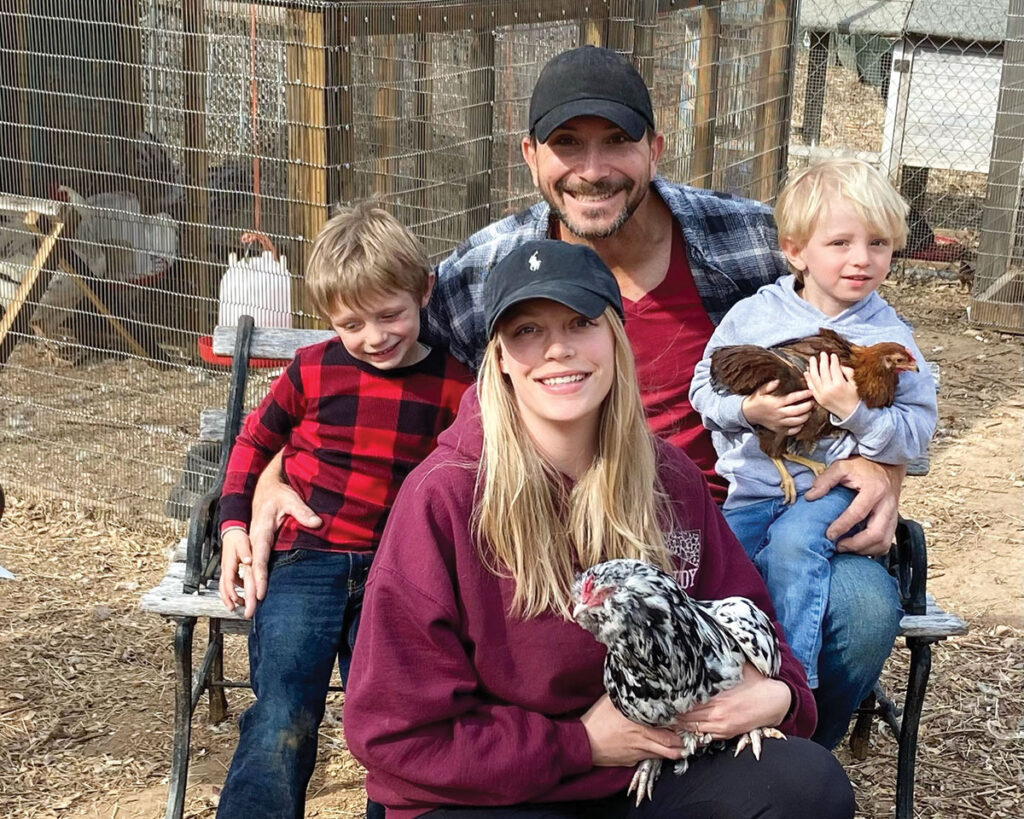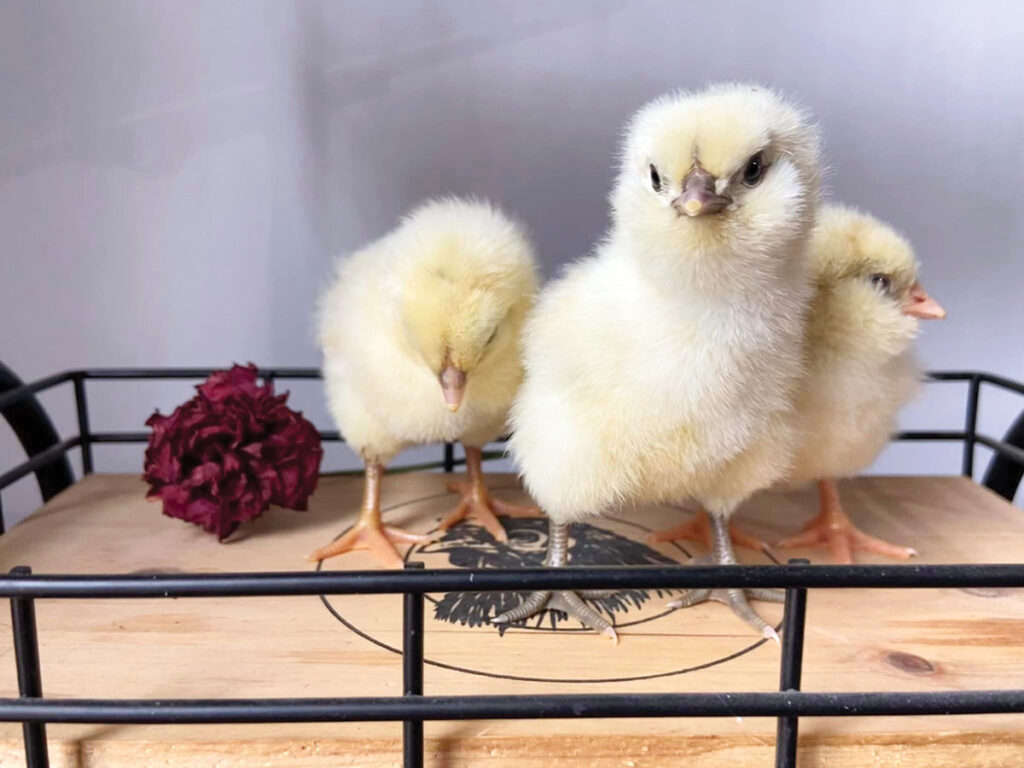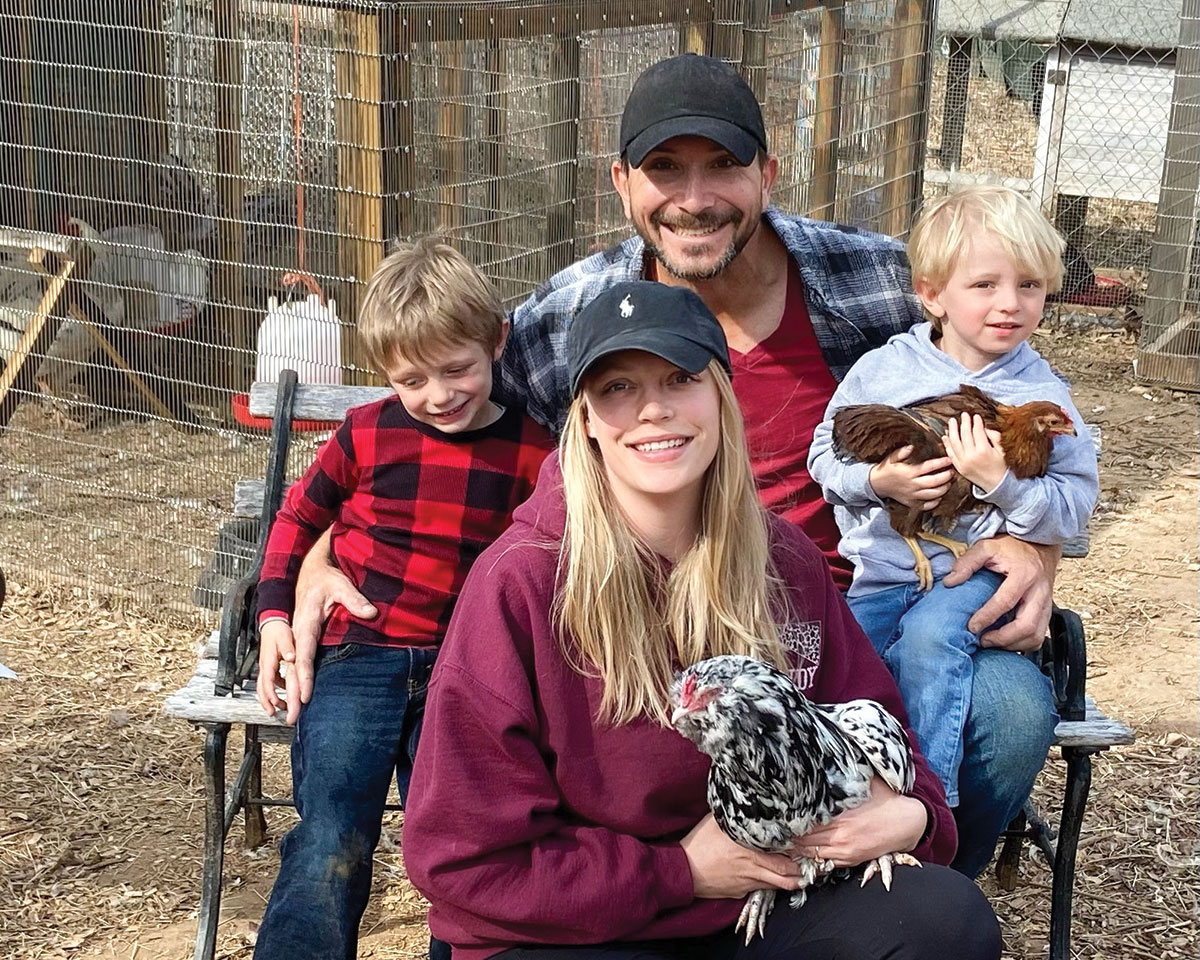
C&C Farm of Everton Ark., began raising purebred chickens about five years ago
EVERTON, ARK. – After making a couple of trips to Arkansas to visit her father, Katlynn Cusick decided the Ozarks was the place for her. The region, she said, suited her, her love of the outdoors and horses, much better than her native New Jersey.
Today, Katlynn, her husband Heath Christain, who grew up in Missouri, and children Killian (4) and Kove (2) live on a farm near Everton, Ark., where they focus on specialty chicken breeds.
At their first home, there was a large chicken coop. On Valentine’s Day six years ago, her late mother-in-law Becky (Rebecca) Christain gifted Katlynn about 20 chickens.
“She had her own breeding operation called Becky’s Bantams years ago,” Katlynn said. “I added them to my then very small backyard flock and it took off from there.”
Having their own chickens appealed to Katlynn and Heath for self sufficiency, but they soon developed a breeding flock.
She said she found some chickens offered to would-be producers aren’t of the highest quality, nor were birds following breed standards.
“I just slowly started breeding them for fun, and then there was more demand for them,” Katlynn said.
C&C Farm offers 16 chicken breeds to customers. The breeding pens have 93 chickens in total.
“I feel like I am learning something new every day because there is so much to it,” Katlynn said of poultry genetics. “We have some breeds that are uncommon but not entirely crazy. I like our Golden Laced Seabrights, which are on the endangered list. I enjoy breeding them and putting them out to the world at a quality level.
“If a hen isn’t producing the right lacing that her offspring is supposed to have, I rehome them as a pet instead of continuing to breed them just to get more. We don’t produce a whole bunch, but what we do have is high quality.”
Other breeds include Wyandotte and Ameraucana varieties, Brahma, Australorp and Mille Fleur d’Uccle, an “ornamental” breed.
“They are pretty adorable,” she said of the breed known for the long feathers on their feet that caused the bird to waddle like a duck. “They are about the size of a dove. They really are just for looking cute. They aren’t as hard to come by as they used to be because people are really picking up on them, but they are still on the endangered list.”
Finding quality birds to start the breeding program took a bit of searching.
“I found a breeder in Alabama where I got my base for my purebred Ameraucana, mostly my blue/black space and lavender Ameraucana. My splash Marans, which I will be offering for the first time this year, came from West Virginia,” Katlynn said. “We made sure who we got our eggs from had quality birds. I looked at their Facebook pages and asked lots of questions to make sure they were in line with my views of breed standards of perfection.”
Most of the sales for C&C Farm are hatching eggs and newly-hatched chicks. The farm recently completed NPIP (National Poultry Improvement Plan) testing, which allows Heath and Katlynn to ship birds and eggs.
“This our first year to do that,” Katlynn said. “We can ship day-old chicks and hatching eggs over state lines. I’m excited to get that going, and we are ready to rock and roll for the season.
“In the past, we have had people making long drives to get them, or they wanted them and couldn’t commit to making the trip. I’m excited to be able to provide this to people who can’t do or afford a six-hour drive.”
The family sells between five and eight dozen hatching eggs weekly in the spring.
“That falls off a little in the summer and fall,” Katlynn said. “We try to have hardy breeds that will lay in the winter; the Brahma, the Silver Laced Wyandottes, and the Australorps are really good for that.”
Kaitlynn and Heath incubate some of their winter eggs to have hens ready in the spring.
“Some people don’t want chicks, and they don’t want or can’t have roosters,” Katlynn said, adding they do not vent sex chicks, choosing breeds identifiable by their color or markings at hatching. “When I start to advertise them in about mid-January, they don’t last very long.”
Egg color is a determining factor for many who want to start a backyard flock, and Katlynn is no exception.
“It was so difficult to get some of the greens, blues and speckled eggs,” she said. “I decided I wanted to breed those myself, and it has become addicting. People really like the rainbow eggs.”
Kaitlynn added purebred birds produce the eggs with the best color, such as the brilliant blue laid by true purebred Ameraucanas. Crossing purebreds can also produce hens that lay colorful eggs.
“There is some crossbreeding, but it is purposeful crossbreeding,” Katlynn said. “It isn’t barnyard crosses. It’s very time-consuming, but you have to love it to do something like this.”

Like other livestock producers, C&C Farm raises its replacement animals. How many and the breed or breeds retained depends on the need.
“As I raise them, I start to see who looks the best, and I will hold to those,” Katlynn explained.
The family opts not to raise traditional meat birds.
“When you do something like this, you end up with a lot of roosters,” Katlynn explained. “With a dual-purpose breed, those roosters aren’t going to waste. I love Black Australorps for that, and the Wyandottes are fairly common. They are large birds, but they don’t grow super-fast like the Cornish-cross.”
Excess rooters are also given to local families to raise for meat.
“I have no desire to hard cull something that can feed a family,” Katlynn said, adding any pullets not of breeding quality will be sold as laying hens.
The larger breeds are also prolific layers and go into the laying flock, a mix of highly productive breeds. There are about 30 birds in the laying flock.
“Last year, we only had about 20 hens, so we are expanding there too,” Katlynn said. “Hopefully, we will be able to take on a few more customers.”
The laying flock also allows Katlynn and Heath to have a place for excess or young hens from the breeding flock.
“If I’m waiting to see what quality they are going to be when they grow out, they go into that flock,” she said. “They get to go be free-range birds and be a happy chicken for a while. If I choose to rehome them, I will post them to go to a new home, but meanwhile, they are supplying us with eating eggs.”
All chickens receive a locally-sourced mix of laying mash, laying pellet, and hen scratch Katlynn mixes with chick feed for added vitamins and minerals.
“I also grow microgreens for all of the chickens, especially those that don’t get to free range,” she said. “It is mostly alfalfa, broccoli, mung bean, and things like that. It’s a mixed pack, and they really like it.”
What started as a way for the family to be more self-sufficient has become much more.
“My husband and I really enjoy doing this,” Katlynn said. “We enjoy selling something of quality to people for them to use, even the roosters. It can be so expensive to get quality eggs or chicks from a hatchery, and they aren’t always quality.”
The farm is important for both Katlynn and Heath in other ways as well. They both deal with disabilities, and C&C Farm allows them to spend time with their young children, as well as supplemental income.
“It has been a blessing for us,” Katlynn said.







